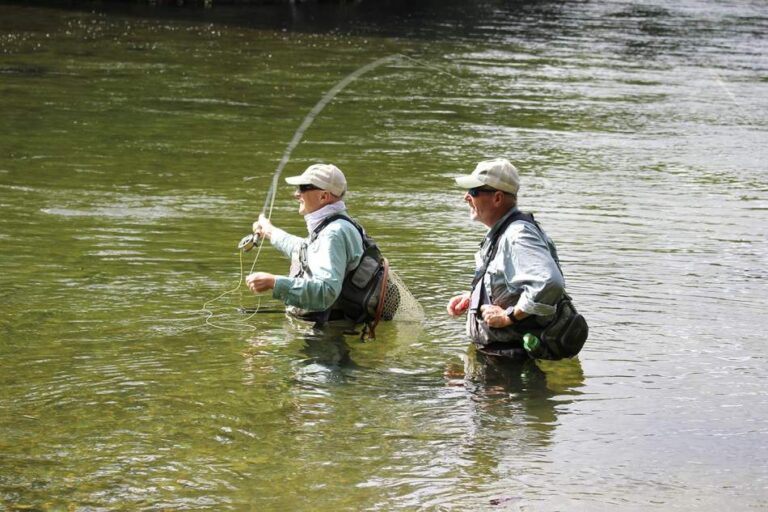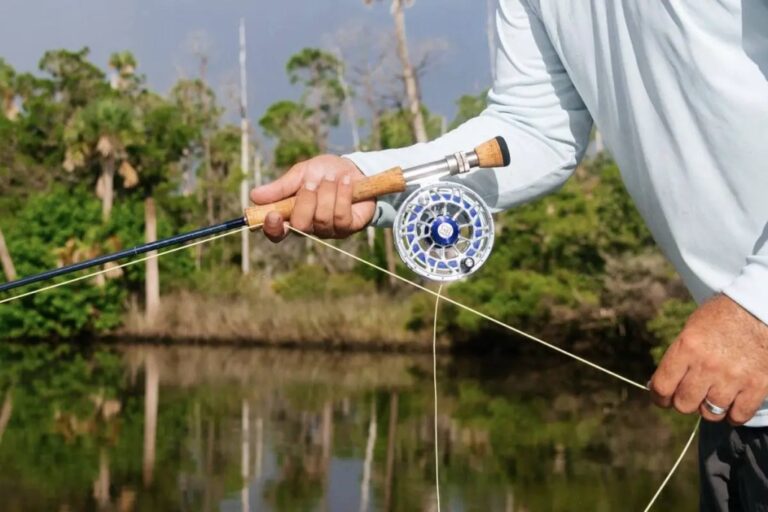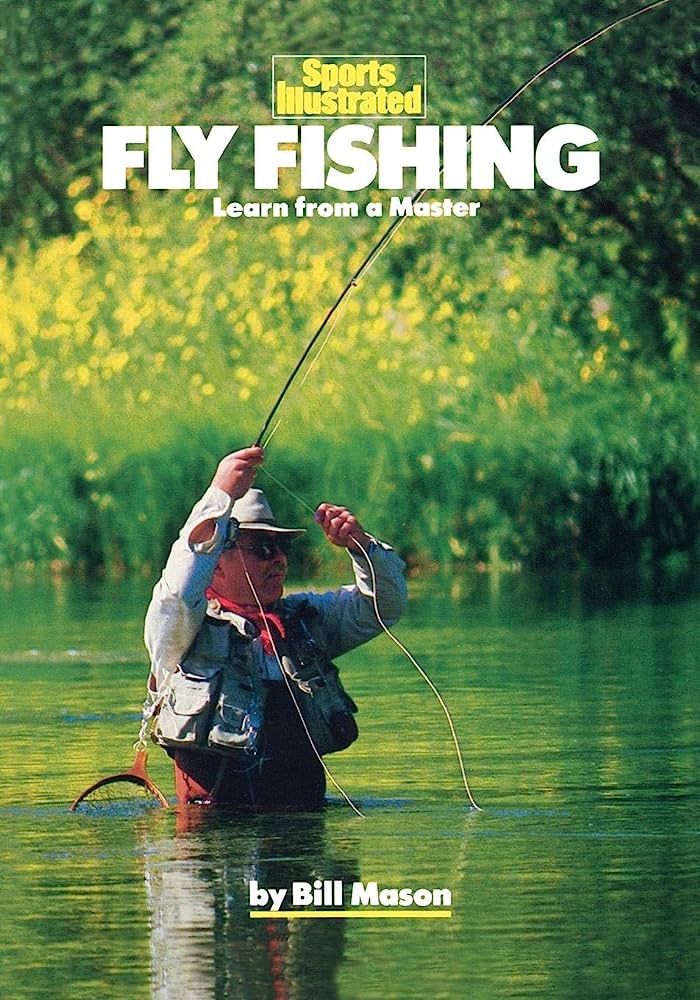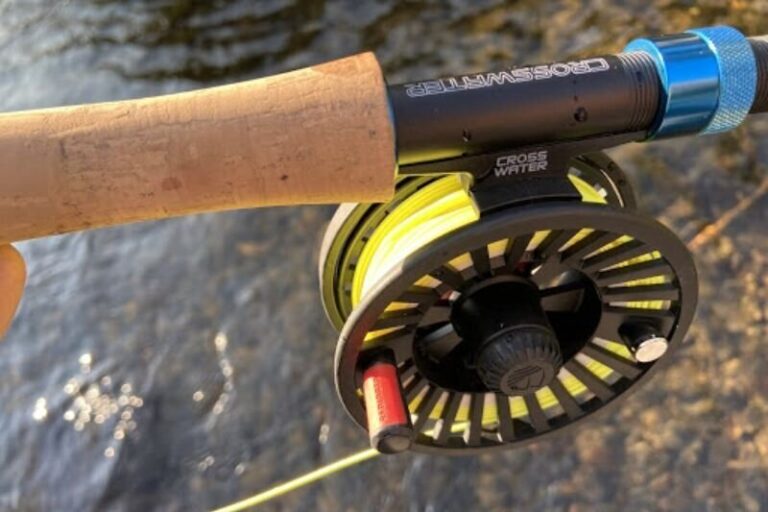To choose between a traditional or large-arbor fly fishing reel, consider the size and weight of fish you plan to catch as well as the fishing conditions you expect to encounter. A traditional reel is suitable for small to medium-sized fish and provides a classic feel, while a large-arbor reel offers faster line retrieval and is better for larger fish and saltwater fishing.
Ultimately, your decision should be based on your individual fishing preferences and needs.
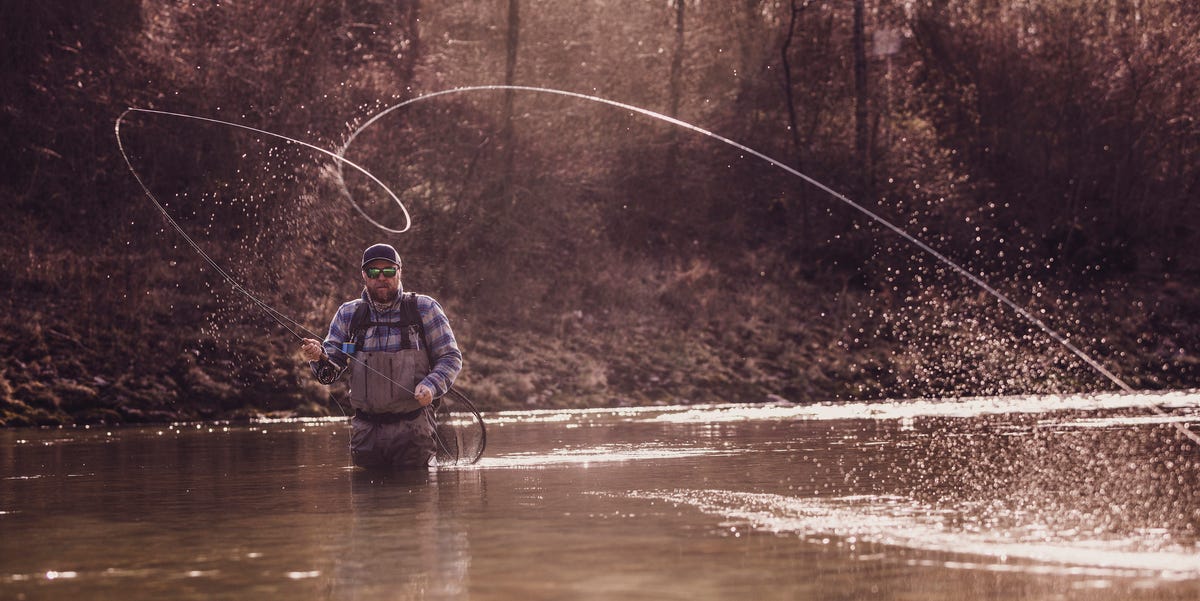
Credit: www.popularmechanics.com
Understanding The Differences Between Traditional And Large-Arbor Fly Fishing Reels
When it comes to fly fishing reels, one of the key decisions you’ll need to make is choosing between a traditional reel or a large-arbor reel. Each type has its own advantages and disadvantages, so it’s important to understand the differences before making your decision.
In this section, we’ll explore the key factors to consider when choosing a fly fishing reel, as well as the advantages and disadvantages of both traditional and large-arbor reels.
Key Factors To Consider When Choosing A Fly Fishing Reel:
- Type of fishing: Consider the type of fishing you’ll be doing most frequently. Different reels are better suited for different fishing styles, such as freshwater or saltwater fishing.
- Line capacity: Take into account the amount of line you’ll need to carry. Traditional reels generally have less line capacity compared to large-arbor reels, which can be a crucial factor if you’re targeting larger fish or casting in deep waters.
- Retrieval rate: Think about how quickly you’ll need to reel in your line. Large-arbor reels typically have a faster retrieval rate due to their wider spools, making them more suitable for situations where you need to quickly bring in your line.
- Weight: Consider the weight of the reel, as it can affect your overall fishing experience. Traditional reels tend to be lighter and more compact, which can be advantageous if you plan on casting for extended periods.
- Drag system: Evaluate the quality and performance of the drag system. Both traditional and large-arbor reels can have different types of drag systems, such as click-and-pawl or disc drag. Choose a reel with a smooth and reliable drag system that matches your fishing needs.
The Advantages And Disadvantages Of Traditional Fly Fishing Reels:
Advantages:
- Lightweight and compact design allows for comfortable casting during extended fishing trips.
- Suitable for smaller fish species and delicate presentations.
- Generally less expensive compared to large-arbor reels.
Disadvantages:
- Limited line capacity may be insufficient for certain fishing situations.
- Slower retrieval rate may not be ideal for fast-moving fish or situations where quick line retrieval is necessary.
The Advantages And Disadvantages Of Large-Arbor Fly Fishing Reels:
Advantages:
- Increased line capacity enables casting in deep waters or targeting larger fish.
- Faster retrieval rate allows for quick line retrieval during fast-paced fishing scenarios.
- Less line memory, reducing the chances of line tangling or coiling.
Disadvantages:
- Larger and heavier compared to traditional reels, which can affect casting comfort on long fishing trips.
- Generally more expensive than traditional reels.
By understanding the key factors to consider and weighing the advantages and disadvantages of traditional and large-arbor fly fishing reels, you can make an informed decision that aligns with your fishing style and preferences. Remember to prioritize your fishing needs and choose a reel that offers the best combination of features for an enjoyable and successful angling experience.
Evaluating Your Fishing Style And Target Species
How Your Fishing Style Influences The Reel Choice
When it comes to choosing between a traditional or large-arbor fly fishing reel, it is important to consider your fishing style. Different fishing styles require different reel designs to optimize performance and enhance your overall experience on the water. Here are key points to consider:
- Casting technique: If you rely on precise and accurate casts, a traditional reel with a smaller spool diameter might be more suitable. The smaller spool allows for tighter line control and reduces line slap during casting.
- Fishing environment: Consider the type of water you typically fish in. If you frequently target smaller streams or tight spaces with limited casting room, a traditional reel’s compact size can be advantageous. On the other hand, if you fish larger rivers or lakes where longer casts are necessary, a large-arbor reel with its faster line retrieval can be beneficial.
- Fighting power: Some fishing styles, such as targeting larger species or fishing in heavy current, require a reel with a strong drag system. Traditional reels often have a larger arbor-to-frame ratio, allowing for more drag surface area and increased stopping power.
- Overall feel: Personal preference plays a role in reel choice as well. Some anglers simply prefer the traditional aesthetics and feel of a traditional reel, while others enjoy the modern and sleek design of a large-arbor reel.
Matching The Reel Size To Your Target Species
The reel size you choose should align with the species you intend to target. Here are important factors to consider when matching reel size to your target species:
- Fish size: Larger species generally require reels with a larger capacity to accommodate the necessary backing and fly line. If you plan to pursue smaller fish, a traditional reel might be sufficient, but if you have dreams of hooking into larger fish, a large-arbor reel with its increased line capacity is recommended.
- Line weight: Different fishing scenarios often call for different line weights. Match the line weight to your target species and select a reel that is capable of handling the corresponding line weight comfortably.
- Drag system: The drag system is crucial when targeting powerful fish that can make strong runs. Look for a reel with a robust and adjustable drag system to ensure you have the necessary control during those intense battles.
Considering The Line Capacity And Retrieval Rate For Different Fishing Scenarios
In addition to your fishing style and target species, it is important to evaluate the line capacity and retrieval rate of the reel for different fishing scenarios. Here are key points to consider:
- Line capacity: Assess the potential scenarios you might encounter on the water. If you plan to fish in situations that may require a significant amount of backing, such as when targeting large migratory fish, a large-arbor reel with generous line capacity is essential. Smaller traditional reels might limit your ability to handle such situations effectively.
- Retrieval rate: The retrieval rate plays a significant role in how quickly you can bring in your line and potentially hook into another fish. Large-arbor reels have a faster retrieval rate due to their larger diameter, allowing you to recover line more quickly and make subsequent casts sooner.
- Versatility: Consider if you’ll be using multiple line types or setups for different fishing scenarios. Some anglers prefer a reel that allows for quick line change-outs, while others dedicate specific reels to specific line types.
Choosing between a traditional or large-arbor fly fishing reel ultimately depends on your personal preference, fishing style, and target species. Evaluating each of these factors will help guide you towards selecting the reel that best suits your needs and enhances your enjoyment on the water.
Examining The Build Quality And Materials
The Importance Of A Durable Reel Construction
A durable reel construction is essential when choosing between a traditional or large-arbor fly fishing reel. Here are the key points to consider:
- A strong and sturdy reel is vital for withstanding the rigors of fly fishing. It needs to withstand the tension and pressure from fish, as well as resist any potential bumps or drops.
- A well-built reel ensures a smooth and reliable drag system, allowing you to control the fish effectively. This can make a significant difference in landing your catch successfully.
- Quality construction materials contribute to the reel’s overall durability. Both traditional and large-arbor reels are typically made from different materials, each with its own advantages and drawbacks.
Comparing The Pros And Cons Of Traditional Reel Materials
Traditionally, fly fishing reels were often made from materials like aluminum, brass, or even plastic. Here’s a closer look at the pros and cons of these materials:
- Aluminum: This material is popular due to its lightweight nature, which makes it comfortable to handle during long fishing sessions. It also offers exceptional durability and corrosion resistance. However, aluminum reels might be more expensive.
- Brass: Brass reels are known for their classic appearance and robustness. They provide a satisfying weight distribution, making them suitable for balancing heavier rods. However, they can be prone to tarnishing and require regular cleaning and maintenance.
- Plastic: Some entry-level or budget-friendly reels are made from plastic. While these reels are lightweight and affordable, they may not offer the same level of durability as those made from metal. Plastic reels are more susceptible to breakage or wear over time.
Comparing The Pros And Cons Of Large-Arbor Reel Materials
Large-arbor reels have gained popularity in recent years due to their increased line retrieval rate and quicker backing capacity. The materials used for these reels also play a crucial role. Consider the following aspects:
- Machined aluminum: Large-arbor reels made from machined aluminum are lightweight, strong, and resistant to corrosion. They offer excellent durability without compromising on performance. However, they tend to be more expensive than other materials.
- Composite: Some large-arbor reels combine materials like aluminum and reinforced composites to achieve the ideal balance of strength and weight. Composite reels can offer a cost-effective option while still delivering reliable performance. However, they may not provide the same level of durability as machined aluminum.
- Die-cast aluminum: Die-cast aluminum reels are often more affordable, making them a suitable choice for beginners or anglers on a budget. While they may not be as durable as machined aluminum, they can still offer satisfactory performance and functionality.
Remember that choosing the right reel material ultimately depends on your preferences, budget, and fishing needs. Consider the factors mentioned above to make an informed decision between a traditional or large-arbor fly fishing reel.
Drag System Performance And Adjustability
If you’re a fly fishing enthusiast, choosing the right reel is essential to ensure an enjoyable and successful fishing experience. One of the key factors to consider when deciding between a traditional or large-arbor fly fishing reel is the drag system performance and adjustability.
Understanding the different types of drag systems, evaluating the drag performance for different fishing situations, and examining the adjustability options for drag systems will help you make an informed decision.
Understanding The Different Types Of Drag Systems
When it comes to fly fishing reels, there are two main types of drag systems: click-and-pawl and disc drag. Here’s a breakdown of each type:
- Click-and-pawl: This traditional drag system relies on a clicker mechanism to control the tension on the line. It offers a more simplistic and nostalgic feel, ideal for light freshwater fishing.
- Disc drag: A disc drag system uses a series of friction discs to provide a smoother and more precise drag. It offers better control, especially when fighting powerful fish or in saltwater fishing situations.
Evaluating The Drag Performance For Different Fishing Situations
The drag performance of a fly fishing reel is crucial, as it determines how smoothly and effectively you can control the fish on the line. Consider the following factors when evaluating the drag performance:
- Start-up inertia: This refers to the resistance encountered when the fish first takes the fly. Lower start-up inertia allows for a more immediate and controlled response.
- Consistency: A drag system should offer consistent tension throughout the line, preventing sudden jerks or breakages.
- Maximum drag pressure: The reel should have a sufficient maximum drag pressure to handle the size and strength of the fish you intend to catch.
- Smoothness: A smooth drag system ensures seamless line release during a fish’s powerful runs or sudden changes in direction.
Examining The Adjustability Options For Drag Systems
Having a drag system with adjustable settings can greatly enhance your fishing experience. Here’s what you need to know about adjustability options:
- Drag knob: Look for reels with easily accessible drag knobs that allow you to make quick and precise adjustments while fighting a fish.
- Infinite control: Some reels offer infinite control, allowing you to make incremental adjustments to the drag tension, giving you more control over the fight.
- Sealed drag system: Consider reels with a sealed drag system, as it provides greater protection against dirt, debris, and water, ensuring the drag remains smooth and consistent over time.
- Large-arbor advantages: Large-arbor reels tend to have a greater range of drag adjustment due to their larger surface area, allowing for fine-tuning the tension depending on the fishing situation.
By understanding the different types of drag systems, evaluating the drag performance for different fishing situations, and examining the adjustability options, you’ll be equipped to choose between a traditional or large-arbor fly fishing reel that suits your specific needs and preferences.
Happy fishing!
Balancing Weight And Balance For Optimal Performance
The Impact Of Reel Weight On Casting And Overall Fishing Experience
When it comes to choosing between a traditional or large-arbor fly fishing reel, one crucial factor to consider is the reel weight and its impact on your casting and overall fishing experience. The weight of the reel plays a significant role in determining the balance of your setup and can affect your ability to cast smoothly and efficiently.
Here are some key points to keep in mind:
- Lighter reels:
- Allow for more delicate presentations and accurate casts.
- Reduce fatigue during long casting sessions.
- Provide better balance when paired with lighter fly rods.
- Heavier reels:
- Offer greater line and backing capacity, suitable for larger species or fishing in saltwater.
- Provide more stability and control, especially when battling powerful fish.
- Can help balance heavier fly rods.
Achieving The Right Balance Between The Reel And Rod
Finding the perfect balance between the reel and rod is essential for optimal performance while fly fishing. The balance refers to the distribution of weight when the reel is mounted on the rod. Consider the following points:
- Proper balance:
- Ensures comfortable and efficient casting.
- Prevents unnecessary fatigue during long fishing sessions.
- Allows for better control and accuracy in presenting flies.
- Matching reel and rod weight:
- Ensure that the reel compliments the weight of the rod for a harmonious setup.
- Lighter reels work well with lighter rods, while heavier reels pair well with heavier rods.
- A well-balanced setup allows for a seamless transfer of energy from the rod to the line.
Understanding The Ergonomics And Comfort Of Different Reel Designs
Beyond weight and balance, the design and ergonomics of the reel also play a crucial role in your overall fishing experience. Consider the following factors when choosing between traditional and large-arbor reel designs:
- Traditional reel design:
- Features a narrower spool.
- Provides a classic look and feel.
- May require more line retrieval for larger fish.
- Large-arbor reel design:
- Offers a wider spool diameter.
- Allows for faster line retrieval.
- Provides increased backing capacity.
- Reduces line memory and coiling.
- Offers smoother and faster drag systems.
Choosing the right reel design comes down to personal preference, fishing style, and target species. Consider testing out different designs to find the one that feels most comfortable and suits your specific fishing needs.
By considering the impact of reel weight on casting and overall fishing experience, achieving the right balance between the reel and rod, and understanding the ergonomics and comfort of different reel designs, you can make an informed decision on whether to opt for a traditional or large-arbor fly fishing reel.
Ultimately, choosing the right reel will enhance your fly fishing adventures and contribute to an enjoyable and successful angling experience.
Maintenance And Longevity Considerations
When it comes to choosing between a traditional or large-arbor fly fishing reel, it’s important to consider maintenance and longevity. Taking proper care of your reel can extend its lifespan and ensure optimal performance. Here are some key considerations:
Proper Cleaning And Maintenance Techniques For Both Types Of Reels
- Regular cleaning: Whether you have a traditional or large-arbor reel, it’s essential to clean it regularly. Use a soft cloth or brush to remove any dirt, debris, or saltwater residue. Rinse the reel with freshwater after every fishing trip to prevent corrosion.
- Lubrication: Apply a suitable reel lubricant to the moving parts of your reel. This will help reduce friction and maintain smooth operation. Be sure to use lubricants specifically designed for fishing reels.
- Inspection: Regularly inspect your reel for any signs of wear or damage. Check for loose screws, cracks, or bent components. Address any issues immediately to prevent further damage.
- Storage: Store your reel in a dry and cool place to avoid moisture buildup and exposure to extreme temperatures. Consider using reel covers or cases for additional protection.
- Professional servicing: Consider sending your reel for professional servicing at least once a year. This can ensure that any internal components are properly cleaned, lubricated, and adjusted.
Evaluating The Durability And Lifespan Of Traditional And Large-Arbor Reels
- Construction materials: Both traditional and large-arbor reels are typically made from high-quality materials such as aluminum, titanium, or graphite. These materials offer durability and resistance to corrosion.
- Design: Traditional reels usually have a simpler design with fewer moving parts, making them less prone to mechanical issues. Large-arbor reels, on the other hand, have a larger spool diameter, which can provide better line retrieval and reduce line memory.
- Intended use: Consider the type of fishing you’ll be doing. If you’re targeting larger fish species or fishing in challenging environments, a reel with a more robust construction and drag system might be preferable.
- User experience: Some anglers prefer the traditional feel and simplicity of a traditional reel, while others enjoy the faster line retrieval and enhanced drag of large-arbor reels. Choose the reel that aligns with your preferences and fishing style.
Considering The Availability Of Spare Parts And Reel Service Options
- Spare parts: Before making a decision, check the availability of spare parts for the reel you’re considering. Ensure that the manufacturer provides easy access to replacement components. This can prolong the lifespan of your reel and make future repairs easier.
- Reel service options: Research the manufacturer’s customer service and reel service options. Look for reputable brands that offer responsive customer support and reliable servicing. Having access to professional reel servicing can be invaluable when it comes to maintenance and repairs.
Remember, regardless of the type of reel you choose, proper cleaning, maintenance, and regular inspections are crucial for longevity. Take care of your reel, and it will continue to perform optimally for many fishing adventures to come. Happy fishing!
Budgeting And Finding The Right Value For Money
Setting A Realistic Budget For A Fly Fishing Reel
As you embark on your journey to choose between a traditional or large-arbor fly fishing reel, budgeting becomes a crucial consideration. To make an informed decision and find the right value for money, keep the following points in mind:
- Determine your budget: Before diving into the reel options, assess how much you are willing to spend. Setting a realistic budget will help narrow down your choices and prevent overspending.
- Consider long-term investment: A quality fly fishing reel can last for years, if not decades. While higher-priced reels may require a larger upfront investment, they often come with superior craftsmanship, durability, and performance. Keep in mind that a well-made reel can save you money in the long run, as it will require fewer repairs or replacements.
- Evaluate your fishing needs: Consider how often you plan to fish and the conditions you expect to encounter. If you’re a casual angler or just starting out, a more budget-friendly reel may suffice. On the other hand, if you’re a passionate angler with frequent fishing trips or targeting larger fish, a higher-end reel might be a better investment.
- Compare prices and features: Once you have a budget in mind, compare different reel options within that range. Look for reels that offer the right balance of features, quality, and affordability. Take note of key features such as drag system, line capacity, weight, and materials used in construction.
- Read reviews and seek recommendations: Don’t be afraid to dive into the wealth of information available online. Read reviews from fellow anglers who have used the reels you are considering. Seek recommendations from fishing communities or consult with experienced fly fishermen who can provide invaluable insights.
Evaluating The Cost-Effectiveness Of Traditional Reels
Traditional fly fishing reels, also known as standard or single-action reels, have stood the test of time. Consider the following points when evaluating if they offer the right cost-effectiveness for you:
- Simplicity and affordability: Traditional reels often boast a simpler design with fewer moving parts compared to large-arbor reels. This simplicity can translate to a more affordable price tag, making them an attractive option for budget-conscious anglers.
- Lightweight and balanced: Traditional reels are typically lighter, contributing to a balanced setup with lighter rods. This can enhance your casting accuracy and overall fishing experience, particularly when targeting smaller fish or in situations where finesse is key.
- Line memory and retrieval speed: It’s important to note that traditional reels may have more line memory due to a smaller diameter spool. Additionally, their slower retrieval speed may be a consideration when dealing with fast-swimming fish or needing to quickly reel in slack line.
Evaluating The Cost-Effectiveness Of Large-Arbor Reels
Large-arbor reels have gained popularity in recent years, offering several advantages that might make them a cost-effective choice for fly fishermen. Consider the following points when assessing their cost-effectiveness:
- Line retrieval rate: Large-arbor reels feature a wider spool diameter, allowing for quicker line retrieval. This can be advantageous when battling larger fish or needing to rapidly bring in line during a hookup. The faster retrieval rate can also reduce stress on the fish by decreasing fight time.
- Line management and reduced memory: With increased line capacity, large-arbor reels help minimize line memory, ensuring smoother casts and reducing the likelihood of tangles. This becomes particularly beneficial when using thicker or longer lines, adding to their cost-effectiveness in the long run.
- Drag performance: Many large-arbor reels excel in their drag systems, offering enhanced stopping power and smoothness. This can be crucial when facing aggressive fish that require controlled line tension.
- Versatility and adaptability: Large-arbor reels are often favored by anglers who frequently switch between different fishing environments. Their increased line capacity accommodates a wide range of line weights and types, providing versatility for various fishing scenarios.
Remember, while cost-effectiveness is a key factor, it’s also essential to strike the right balance between quality, performance, and your individual fishing needs when selecting a fly fishing reel. With a realistic budget in mind, along with an understanding of the cost-effectiveness of traditional and large-arbor reels, you’ll be well-equipped to make an informed decision and find the perfect reel for your fly fishing adventures.
Making Your Final Decision And Conclusion
Considering All The Factors In The Decision-Making Process
When it comes to choosing between a traditional or large-arbor fly fishing reel, you’ll need to consider several factors before making a final decision. Here are some key points to keep in mind:
- Weight: Traditional reels tend to be heavier than large-arbor reels. If you prefer lightweight gear, a large-arbor reel might be a better choice.
- Line capacity: Large-arbor reels usually have a larger line capacity than traditional reels. If you plan on targeting bigger fish or need to use heavier lines, a large-arbor reel would be more suitable.
- Line retrieval: Large-arbor reels have a larger spool diameter, resulting in faster line retrieval. This can be advantageous when you need to quickly retrieve line to keep up with fast-swimming fish.
- Backing capacity: Large-arbor reels typically have a higher backing capacity, allowing you to use more and heavier backing material. This is beneficial when targeting fish that make long runs or require extra line capacity.
- Drag system: Traditional reels often have a stronger and smoother drag system due to their larger surface area. If you anticipate hooking into larger fish that require a strong drag, a traditional reel might be the better option.
Weighing The Pros And Cons Of Traditional And Large-Arbor Reels
Both traditional and large-arbor reels have their own set of advantages and disadvantages. Here’s a breakdown of the pros and cons for each type:
Traditional reels:
- Pros:
- Better control over line retrieval due to smaller spool diameter.
- Usually have a stronger and smoother drag system.
- Generally less expensive compared to large-arbor reels.
- Cons:
- Heavier in weight, which can cause fatigue during long fishing sessions.
- Smaller line capacity may limit your ability to target larger fish.
- Slower line retrieval speed compared to large-arbor reels.
Large-arbor reels:
- Pros:
- Lighter in weight, making them more comfortable to use for extended periods.
- Larger line capacity allows for targeting bigger fish and using heavier lines.
- Faster line retrieval speed due to larger spool diameter.
- Cons:
- Generally more expensive than traditional reels.
- Smaller surface area may result in a less powerful drag system.
- May require more backing material, increasing overall cost.
Making An Informed Choice Based On Your Fishing Preferences And Needs
Ultimately, the decision between a traditional or large-arbor reel comes down to your personal fishing preferences and needs. Consider the following factors when making your choice:
- Targeted fish species: If you usually target smaller fish, a traditional reel may suffice. However, if you frequently pursue larger species, a large-arbor reel would be more suitable.
- Fishing conditions: Think about the fishing conditions you typically encounter. If you often fish in fast-moving currents or windy conditions, a large-arbor reel’s faster line retrieval could be advantageous.
- Budget: Consider your budget and how much you’re willing to invest in a reel. Traditional reels generally offer a more affordable option, while large-arbor reels tend to be pricier.
- Personal preference: Ultimately, choose the reel that feels most comfortable and intuitive for you to use. Handling both types in person can help you determine which one feels more natural in your hands.
By carefully considering these factors, you can make an informed decision that aligns with your fishing preferences and needs. So, take your time, weigh the pros and cons, and choose the reel that will enhance your fly fishing experience. Happy fishing!
Conclusion
After weighing the pros and cons of both traditional and large-arbor fly fishing reels, it’s clear that the decision ultimately comes down to personal preference and specific fishing needs. Traditional reels offer a classic aesthetic and a slower line retrieval rate, making them a great choice for anglers looking to fish small to medium-sized species in traditional fly fishing settings.
On the other hand, large-arbor reels provide faster line retrieval and increased line capacity, making them ideal for targeting larger fish and for use in saltwater or faster currents. Whichever reel you choose, it’s important to consider factors such as the type of fishing you’ll be doing, the target species, the fishing environment, and your own personal fishing style.
By carefully considering these factors and understanding the unique characteristics of each reel type, you’ll be able to make an informed decision that enhances your fly fishing experience. Happy fishing!

